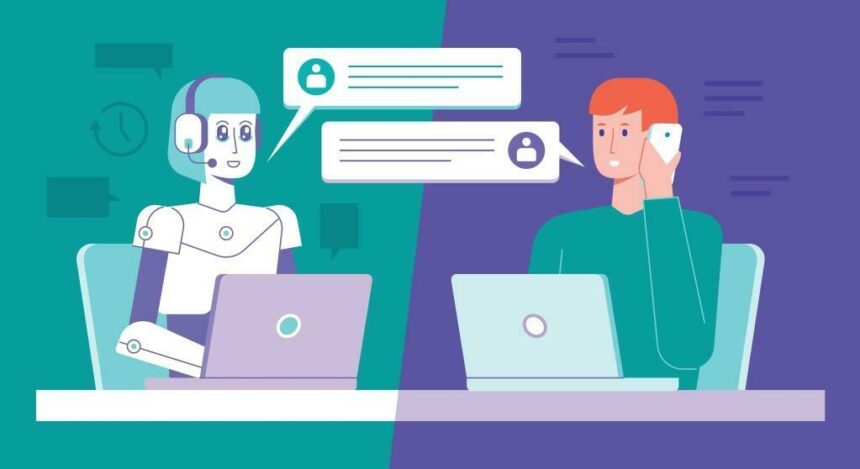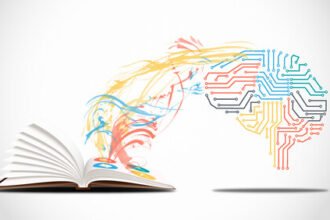Artificial intelligence (AI) has gained momentum in the past years and has provided an in-depth learning pattern for business people. Even though it may take a little longer to get into the audio world, we have seen a rise in AI technologies regarding video and image processing.
Moreover, it’s a subset of artificial intelligence when it comes to machine learning. Machine learning has changed the way we are using voiceover technology. For instance, you’ve noticed the many voice assistants like Cortana, Siri, Alexa, and more. Since AI is developing to such an extent, AI voices are becoming more realistic than ever and doing much better in natural voice processing.
Furthermore, in this article, we will discuss how far machine learning and AI have come and directly affected the improvement of voice technology.
How machine learning is improving voice technology
Smarter audio
As the demand for voice technology starts growing, providers such as automatic speech recognition (ASR) are increasing to develop more profound innovations to speech recognition products that can serve more needs requested by the people.
The users of speech recognition technology have risen, and so has the market. According to a study, the voice and speech recognition market will grow to $22 billion by 2026. This massive shift is now challenging ASR to innovate and navigate different dialects in one language. For example, a native English speaker will have different dialects based on your location (Australia, England, Scotland, the USA, and more).
The ASR can only do this if driven by Machine learning (ML) and artificial intelligence (AI) capabilities to transform a spoken word from different dialects from a language in a text manner. Additionally, it’ll be able to recognize even more dialects and accents that come from one language. In other words, we can say that one day, a realistic AI voice generator will be used for every voice audio technology used worldwide.
Some real-world examples regarding machine learning in audio technology include:
- iZotope & Neutron 2: considered track assistance that utilizes AI and ML capabilities to detect instruments that are fighting presets directly to the user. It also features a utility for isolating a dialogue in their audio.
- LANDR: an automated audio mastering service that firmly relies on AI and ML to set parameters regarding digital audio processing.
- Google’s Wavenet: a learning model used to generate audio recordings.
Data is fuel
The sound waves part of a computer is the initial step in speech recognition, whereas these sounds turn into bits. Therefore, for speech recognition social engineering to be successful, the process should be including these steps:
- Full access to a voice sample collection or reliable speech database
- Eliminating practical features that improve the learning capabilities of the algorithm since the number of features that characterize datasets is fewer in number.
- ML algorithms are used to create classifiers that can be reliable and allow ML algorithms to learn from training samples to make new observations.
Finally, deep learning applies to speech recognition technology and is precise in everyday usage in any environment. Therefore, a voice recognition system should operate smoothly in the environments given.
Realistically, those who want to create a voice recognition system need to have a large amount of training data. If we speak financially, you need millions of dollars to collect the correct transcribed data. Only then you’ll be allowed to train the speech recognition system properly regarding transcribed data.
Digital signal processing in AI and ML
Even though we are still early in applying AI and ML in audio processing, deep learning methods have allowed us to solve signal processing issues from a different perspective which is still ignored by a vast number in the audio industry. Generally speaking, understanding sound and signal processing are complex and complicated to describe in words.
For example, if you hear two or more people speaking, how would you describe the parameters for these two people talking to each other? Well, it depends on many things. Some questions that arise are:
- How does personality (age, sex, energy) affect these voices?
- How much do the room acoustics and physical proximity impact the level of understanding?
- What about other noises that can occur during the conversation?
As you saw for yourself, measuring a voiceover can derive from many parameters and requires a vast amount of attention to them. In this case, AI can give us a pragmatic approach that sets up the conditions needed for learning.
Processing audio using deep neural networks are evolving day by day; however, there are still many problems arising that we have to solve, and here are some of them:
- Hi-fi audio reconstruction: small, low-quality microphones
- Spatial simulations: used for binaural processing and reverb
- Selective noise canceling: removing certain elements such as car traffic
- Analog audio emulation: estimating complex interactions that are between non-linear analog audio components
Voiceover artists
A crucial step to creating natural voices with deep learning (machine learning) is to have original audio during the process. In contrast, many businesses worldwide are working with voice actors to create new voiceovers. In addition, most artists are paid well for their time conducting recordings and even receiving royalties each time their AI voice is used.
However, some issues with voiceover artists include getting scammed for their voices. They have recorded a voiceover and haven’t been further informed of what and who it was being used by. For example, Susan Bennett, the original voice for Siri, had a contract with ScanSoft but never knew that her recordings were actually for Apple. Even though she gave permission to use her voiceover, she only got paid for the one time she did the recording and not its continued use.
Moreover, some other issues that arise with voiceover artists are that contracts and fees have not yet developed much in the industry regarding the technology available. Furthermore, there are arguments that voiceovers are used negatively, which may even ruin the reputation of artists. For example, it can be used in the adult industry, a company they don’t want to work with, and foul language.
The rise of use cases
As AI and ML allow people to increase custom experience, find more answers, access services, return products, find answers in the most natural way possible, voice tech evolves across every industry. Here are a few examples of how machine learning and AI are changing the natural language processing cases:
- Consumer order placing: another application concerning speech recognition and transcription in the consumer industry. Consumers are given a chance to order faster and more efficiently. Taking the time to scroll through an entire menu, customers can only use voice requests and place orders in a few seconds.
- Virtual assistants: According to a study, by 2024, there are expected to be more than 8.4 billion voice assistants in the market. Voice assistants can support the IT help desk team and much more. Employees have more time to complete their daily tasks and use time more efficiently by asking more from virtual assistants.
- Customer intimacy analysis: Retail businesses are beginning to use audio mining software to analyze call center conversations better and understand their customers. An ASR powered by ML and AI can precisely understand customers and extract valuable insights from their discussions.
Is voice recognition technology the future?
The real question is if voice recognition technology is the future or not? The answer is yes! As AI and ML technologies continue to improve over time, we will see the contexts in which they are growing. Moreover, there will always be a spot for voiceover artists. Initially, because they are assisting voice recognition technology in improving, and secondly, voice technology might develop to such an extent that it’ll even give you emotions when talking to you.
Wrapping it up
Well, that’s about it for this article. These are why machine learning and AI have improved voice technology in the past years and how it’s continuously evolving. One day, voice technology will develop to an extent where talking to a voice assistant will be the same way as speaking to another human being.
Take into account what your business can offer and how it can incorporate voice technology in your business strategy. After all, the world is shifting towards a new beginning and a technological path. After all, there’s nothing worse than heading towards a completely digital age not taking advantage of it.
Figure out how you can incorporate voice recognition technology into your business, and in turn, you’ll stand out from the rest!











